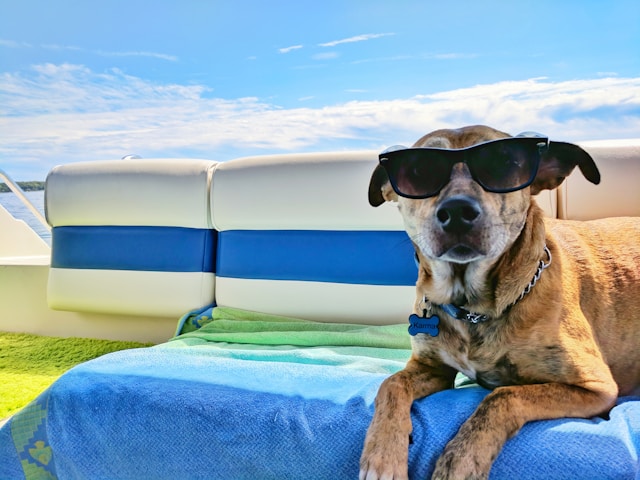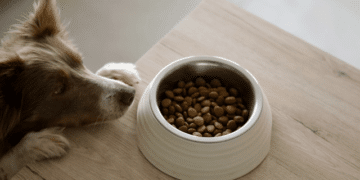As temperatures rise, keeping your pet cool and comfortable becomes essential. Pets can suffer from heatstroke, dehydration, and other heat-related illnesses if they don’t get the proper care during hot weather. Whether you have a dog, cat, rabbit, or even a reptile, ensuring they stay cool in the summer is key to their health and happiness.
In this guide, we’ll cover practical ways to help your pet beat the heat, from hydration tips to grooming advice and cooling accessories.
Understanding Heat Risks for Pets
Just like humans, pets can struggle in hot weather. However, they don’t sweat the way we do, making them more vulnerable to overheating. Some pets, such as brachycephalic breeds (like Bulldogs, Pugs, and Persian cats), are at an even higher risk due to their short snouts, which make breathing difficult in extreme heat.
Signs of heat exhaustion in pets include:
-
Excessive panting or drooling
-
Lethargy and weakness
-
Vomiting or diarrhea
-
Red or pale gums
-
Collapse or seizures
If you notice these symptoms, take immediate action to cool your pet down and contact a veterinarian.
Hydration and Diet Adjustments
One of the simplest yet most effective ways to keep your pet cool is by ensuring they stay hydrated. Fresh, clean water should always be available, and you can even add ice cubes to keep it cool.
Additional hydration tips:
-
Offer wet food instead of dry kibble to increase moisture intake.
-
Provide frozen treats made from pet-safe ingredients like yogurt, peanut butter, or fruit.
-
Place multiple water bowls around your home and outdoor areas.
For pets like rabbits and guinea pigs, you can give them water-rich vegetables like cucumbers and lettuce to help with hydration.
Providing a Cool Environment
Keeping your pet comfortable indoors is essential during extreme heat. If possible, ensure your home is well-ventilated with fans or air conditioning.
Ways to keep pets cool inside:
-
Use cooling mats or damp towels for them to lie on.
-
Keep curtains closed to block out the sun.
-
Set up a shaded, well-ventilated area for outdoor pets.
If you have a dog, make sure they have access to cool tile floors, as they help dissipate heat better than carpets or rugs.
Exercise and Outdoor Safety
Your pet still needs exercise, but it’s important to adjust their routine to avoid the midday heat. The best times to walk dogs or let cats explore outside are early in the morning or late in the evening when temperatures are lower.
Outdoor safety tips:
-
Always test the pavement temperature before walking your dog – if it’s too hot for your hand, it’s too hot for their paws.
-
Avoid excessive running or play during peak heat hours.
-
Bring a portable water bottle for your pet on walks.
-
Provide plenty of shade if your pet stays outside for extended periods.
For small pets like rabbits and guinea pigs, ensure their cages or hutches are out of direct sunlight and placed in a well-ventilated area.
Grooming and Coat Care
Proper grooming can help keep your pet cool, but avoid shaving them completely. A pet’s coat acts as natural insulation, keeping them cool in summer and warm in winter. Instead, regular brushing removes excess fur and prevents matting, which can trap heat.
Grooming tips:
-
Trim long-haired pets, but don’t shave them bald.
-
Brush your pet regularly to remove excess fur.
-
Use pet-friendly cooling sprays to help lower body temperature.
For dogs with double coats, such as Huskies and Golden Retrievers, avoid shaving their fur, as it can cause overheating and sunburn.
Water Play and Cooling Accessories
Encouraging your pet to play in water is a fun and effective way to keep them cool. Many dogs enjoy splashing in kiddie pools or playing with sprinklers, while some cats may tolerate damp washcloths on their fur.
Cooling accessories for pets:
-
Cooling vests and bandanas that retain moisture to keep them cool.
-
Elevated pet beds to allow airflow beneath them.
-
Frozen chew toys for dogs and cats.
If you have a reptile, ensure their enclosure has a cool side and a warm side, with proper ventilation to prevent overheating.
Special Considerations for Different Pets
Different pets have unique cooling needs.
-
Dogs and Cats: Provide shaded rest areas and limit outdoor activity.
-
Rabbits and Guinea Pigs: Keep their enclosures in a shady, cool place and offer frozen water bottles wrapped in towels for them to lean against.
-
Birds: Ensure their cage is away from direct sunlight and offer cool misting or shallow water baths.
-
Reptiles: Monitor tank temperatures closely and provide adequate ventilation.
Emergency Response: What to Do if Your Pet Overheats
If your pet shows signs of heatstroke, act quickly:
-
Move them to a cool, shaded area.
-
Offer cool (not cold) water to drink.
-
Apply cool, damp towels to their paws, neck, and belly.
-
Use a fan to help lower their temperature.
-
Seek veterinary care immediately if symptoms persist.
Final Thoughts
Keeping your pet cool in the summer requires a mix of hydration, proper environment control, and safety precautions. By following these tips, you can ensure your pet enjoys the warm weather without suffering from heat-related health issues.









